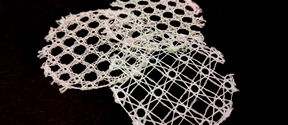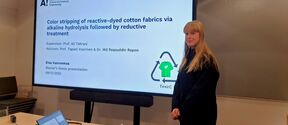5 million euro project could see Finland become the model country for the circular economy of metals
Human kind uses metals at an accelerating speed, but must refine the materials it needs from depleting resources.
'The best resources have been mined quite some time ago. More effective recycling would reduce the need for mining and energy consumption and would make us less vulnerable to imports and increasing impurities in raw materials,' explains Aalto University Professor Mari Lundström. She coordinates the CMEco research project, which kicked off this spring and received Government key project funding from Tekes. The aim of the project is to create conditions in Finland that would allow for successful circular economy for metals.
In addition to Aalto, research institutes taking part in the project include VTT, Lappeenranta University of Technology and the Geological Survey of Finland and participating companies include Outokumpu, Outotec, Fortum, Boliden and Nornickel. The project's total budget for two years is five million euros; 3 million from project budget is allocated to research and development in companies whereas the budget in research institutes is 2 M€. Funding will be used to train experts and develop processes, which will allow the Finnish metal industry to utilise the valuable metals in solid and liquid secondary flows as effectively as possible.
'Within the scope of the project, we will focus on non-ferrous metals, i.e. heavy metals with the exception of iron, as well as precious metals and critical metals, such as copper, gold, silver, rare metals and lithium. Recycled secondary flows include several materials such as slag from smelters, the jarosite residue that is created in leaching processes, by-products from nickel plants and the bottom ash produced when burning waste. In a way, they too are ore, but secondary ore,' Ms Lundström explains.
At the moment, there are enormous differences in the recycling rate of different metals.
At the moment, there are enormous differences in the recycling rate of different metals. In practice, Finland's steel industry is completely based on recycling materials, and the majority of the copper produced worldwide is still in use in one form or another. On the other hand, less than one percent of the lithium used in batteries, telephones and other products is currently recycled. The project's parties are utilising their strong expertise e.g. in the analysis of raw materials, hydrometallurgy, which is based on aqueous solutions and pyrometallurgy, which focuses on high temperature processes, in the development of new recycling innovations.
'Our aim is to progress towards perfect recycling of metals and good business. It is our task to use research to broaden what is profitable for industry. This can happen if we develop novel processes either stand alone or integrated to the primary metal production to produce new metal products. As we are working with large volumes of valuable metals, even a small improvement in efficiency can prove very significant with regard to competitiveness,' Ms Lundström emphasises and continues;
'The number of metallurgy experts in Finland are not high, but the metal industry's importance to our country's export sector is very significant, and it is the largest field of industry in Finland. Finland's Government also wants to see us become the world leader in cleantech, and in addition to bioeconomy this will also require other sectors. With regard to the Earth's future, it is essential that we carry our fair share of responsibility: maintaining our present standard of life will require effective recycling.'
More information:
Professor Mari Lundström
mari.lundstrom@aalto.fi
Photo by Adolfo Vera
Read more news

Smart textiles are reshaping our understanding of materials – and interspecies communication
The PAST-A-BOT research project, funded by the European Research Council (ERC), is developing soft, intelligent textiles that could one day function as rescue robots, sound-sensing agricultural fabrics, or assistive clothing. At the same time, the project aims to rethink the way we approach materials research.
Master’s student showcases efficient color stripping of cotton fabrics
On December 9, master’s thesis student Elsa Vuorenmaa from the Textile Chemistry Group presented the results of her research on color stripping of reactive-dyed cotton fabrics.
Future makers research batteries, cryptography and plastic recycling
The Technology Industries of Finland Centennial Foundation awarded 3.5 million euros in research funding to eight projects, five from Aalto University.






